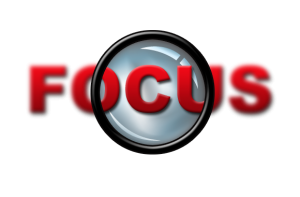by Progress | May 18, 2016 | Uncategorized

How do systems affect our ability as business leaders to get things done?
The most obvious systems are those we create – manufacturing systems, IT systems, accounting systems, etc. But they are only part of the story. Most systems are less visible because we don’t create them – we simply find ourselves immersed in them. They can be as difficult for us to see as it is for a fish to see water. Yet these less visible systems have a profound effect on our efforts to achieve results.
What are examples of invisible systems? The weather. Our culture. The physics, chemistry and biology of all that surrounds us. Human nature. Climate change.
How do systems affect our ability as business leaders to get things done?
Too often, we “over control” the systems we create (eg: manufacturing, IT, etc.). We try to control what we believe we can control such as through rigid policies and procedures. Meanwhile, we ignore those systems that we didn’t create. The result? The “over control” of systems we create interferes with the natural systems that surround us (a reaction called “tampering”) and causes the natural systems to “bite us back”. Such are the dynamics of “unintended consequences”.
Consider the natural system of human nature. Humans are inherently creative beings who are meaning-making and meaning-seeking. For the most part, human beings can be trusted to do the right thing. Now, assume an employee betrays that trust by stealing. Rather than focus on the isolated incident, many organizations react by developing policies that suggest that all employees steal. A common example is to deny or delay reimbursement of employees’ reasonable and well-invested promotional expenses in order to enforce highly rigid rules to prevent stealing. The result? The human system encourages employees to find ways around the rigid rules, or alternatively, to give up their efforts to promote the company at a reasonable cost. Either way, the natural system, when tampered with, bites back with unintended consequences.
How might you heighten your sensitivity to systems?
Start with an activity that involves one of the most accessible systems – nature. Activities that interact with nature include golfing, skiing, sailing, boating, etc.
Now, attempt your activity in two different ways. First, try to “over control” your activity, such as by “powering against” the wind, wave or current. Then assess your success relative to the investment of effort this required.
Second, try again. This time relax. Be more aware of the natural forces around you. Ride these forces like a surfer rides a wave rather than fight them. Again, assess your success relative to your effort. How much better was your “ROI” on the second attempt?
Here’s another exercise you can try next time you are looking for something. Say you are looking for a particular item among many shelves of inventory or you are looking for a particular entry in a complex computer printout.
First, look for that item very intently. Put a lot of effort into your search. Look “hard”. How quickly did you find the item you were looking for? Or did you even find it at all?
Second, look for another item. This time, as you gaze forward at the shelves or the document, relax, really relax. Notice as you continue to look forward how your peripheral vision starts to expand. Without turning your head, you now have a vastly larger view of the landscape that stands before you. Continue to relax and see if the item you’re looking for doesn’t literally leap into your site. How much time did that take? How much effort did it take? Chances are, the second technique will help you find what you looking for in less time and with less effort. In other words, the second technique enhances your productivity.
Now think about your business. What are examples of where your organization fights against the systems it’s in? How is this using up excessive amounts of resources or generating unintended consequences? How might your business more gently and elegantly “ride” the many forces that surround it to generate more predictable results at a lower cost?
For help or more information, tour the rest of this blog, or take advantage of a no cost or obligation 30 minute consultation. Sign up here
by Progress Consulting | Nov 13, 2015 | Implement Plans

How to better implement plans to X•L•R•8•Progress™ !
As professional facilitators, we see the failure to successfully implement plans as a major obstacle to optimize productivity and realize economic potential.
Here are the five most common problems we encounter:
Plans aren’t implemented. In many cases, the organization lacks a well-organized, disciplined process to take action on its plans. In some cases, the problem is more subtle and deep-seated, where despite an organized approach to implementation, plans are sabotaged by those who don’t support or understand the plan or who have a vested interest in maintaining the status quo. In some cases, the saboteurs are amid senior management itself. Another common factor is that the plan is not well designed. Design flaws should be detected and corrected quickly before the plan loses credibility or implementation loses momentum.
Plans are implemented but do not achieve the desired results. Quite often, the cause is pretty obvious. Desired results were never defined in the first place. This is one of the most common process omissions that we see in organizations. In other cases, the implementation process gets focused on action steps and loses sight of what the actions are supposed to achieve.
Implementation isn’t on time. Most organizations are quick to blame implementation. It could well be that the timing or timetable was inappropriate in the first place.
Implementation isn’t on budget. Like timing, the culprit here could be the spending, the budget or a combination of both.
Implementation creates unintended consequences. Action steps are too focused on achieving a single result without due consideration to the ripple effects they create. This happens when action steps are not designed to flow in concert with surrounding systems. Implementation is as awkward and disruptive as the proverbial bull in a china shop.
How should your organization respond? First, gather participants from recent implementation efforts to share in a candid analysis of how well your organization is performing in these five critical aspects of successful implementation. Second, take steps to retain and exploit the strengths of your implementation process and address your vulnerabilities.
For help or more information, tour the rest of this blog, peruse our website or take advantage of a no cost or obligation 30 minute consultation. Sign up here
by Progress Consulting | Oct 23, 2015 | Streamline Everything!
At Progress Consulting, our mission is to help organizations X•L•R•8•Progress™ – to see their optimal future more clearly …and realize it more quickly and easily™.
This post explains how to streamline everything to X•L•R•8•Progress™ !

Dr. W. Edwards Deming, the Quality expert most credited with achieving Japan’s post-war economic turnaround, referred to complexity as “unnecessary cost”.
Just think of the last time you experienced disruptions to your work, unproductive or unnecessary meetings or hassles in trying to get your work done. All of this comes at great cost. It costs money. It costs you customers and funders. It costs your organization in terms of the loss of valuable employees.
How do you find opportunities to streamline your organization? There are three primary entry points to consider.
First, poor results, that are revealed in financial statements and management reports. The problem is that those reports reveal the existence of inefficiency, but not the cause. Serious errors are made by looking for causal factors in “snapshot” financial statements and reports. Once the poor result is identified, move away from the reports and start studying the processes that generate those results. The cause of the problem and the identification of the solution await you in a deeper understanding of your own processes.
Second, cumbersome systems such as those with frequent error correction, loop backs to previous steps, stacks of work sitting “in process” or processes that are often associated with workplace hassle and poor morale.
Third, frequent errors in quality, reliability, timing or cost control.
Using these three entry points, develop a list of the processes that need to be improved. Then prioritize them and focus on a small and manageable number of processes to fix. Why? Because solving the major culprits could begin a chain reaction that makes many problems disappear.
We were invited into an organization that identified 22 process problems. To address them, they created 22 process improvement teams. They were investing huge resources and process improvement. Unfortunately, nothing much was improving.
We worked with them to prioritize their 22 problems and convince them to address only 3 of them. For each of those three issues, we rigorously led teams in root cause analysis to get to the root cause of each of those 3 problems.
Root cause analysis has several benefits. First, by addressing root cause, you resolve the problem “once and for all”. Second, many symptoms share a common root cause. By eliminating the root cause, you eliminate the many symptoms it creates. In this case, the root cause of those three problems generated many of the 22 problems that were trying so hard to solve. Deming, a statistician by training, claimed that any organization with dozens or hundreds of problems probably only suffers from half a dozen root causes. Imagine the leverage in finding in eliminating 5 or 6 root causes.
In effect, the combination of prioritization via root cause analysis streamlines your streamlining!
The results of streamlining should be more loyal customers, happier employees and the significant increase in your organization’s return on its costs.
For help or more information, tour the rest of this blog, peruse our website or take advantage of a no cost or obligation 30 minute consultation. Sign up here
by Progress Consulting | Oct 6, 2015 | Get Focused
At Progress Consulting, our mission is to help organizations X•L•R•8•Progress™– to see their optimal future more clearly …and realize it more quickly and easily™.
To see your optimal future more clearly, get focused!
In his landmark book, The Fifth Discipline, author Peter Senge promotes the concept of creating a learning organization – an organization that continuously expands its capacity to achieve its mission.
If that isn’t the mandate of a CEO or division leader, or any leader, what is?
However, you can’t effectively expand your organization’s capacity to achieve its mission if its mission isn’t clear and shared by everyone involved. We believe that your FIRST imperative to X•L•R•8•Progress is to lead your organization to get focused.
Organizations that lack a clear and shared focus do not effectively or efficiently achieve strong day-to-day direction unless they have become dependent on the CEO who literally rides herd on the organization with strongly enforced instructions.
However, empirical evidence, such as reported by authors such as Jim Collins and his classic publication, From Good To Great, indicates that organizations with such dependence on the CEO may have noteworthy chief executives but are not great organizations. Their success, like their direction, is overly dependent on a single individual. And they fail to fully leverage the perspectives, wisdom and talents of their employees and other stakeholders.
How focused is your organization? Try these first few steps.
- Jot down your description of why your organization exists (as distinct from others in your sector), where it is heading and how you will tell that it is a sustainable success. When you are finished writing, ask yourself how clear that is.
- Tell others what you wrote. Ask them how clear it is.
- Gauge others’ reaction. How impressed were they? Did their eyes light up? Did your words inspire them? If not, your “focus” needs more work. It certainly needs “heart”.
- Ask others in the organization (by the water cooler, in an elevator) to answer those same three questions in their own words. How quickly and easily did they respond? How excited were they to respond? How similar is their response to yours?
- Identify and implement next steps to improve your organization’s shared focus.
For help or more information, tour the rest of this blog, peruse our website or take advantage of a no cost or obligation 30 minute consultation. Sign up here
by Progress Consulting | Sep 29, 2015 | Manage Change

At Progress Consulting, our mission is to help organizations X•L•R•8•Progress™ – to see their optimal future more clearly …and realize it more quickly and easily™.
This posting explains how to better manage change to X•L•R•8•Progress™ !
My colleague and mentor, the late David Simmonds, referred to the ability to lead change is the ultimate test of a leader.
Sadly, success in the implementation of change is relatively rare. Consider these grim statistics.
- Most major change initiatives, whether intended to boost quality, improve culture or reverse a corporate death spiral, generate only lukewarm results and many fail miserably (Harvard Business Review, “Leading Change Why Transformation Efforts Fail”, John P. Kotter, 2000)
- Studies of past mergers show that two of every three deals have not worked; the only winners are often the shareholders of the acquired firm who sell their company for more than it’s really worth (The Economist, January 1999).
- Investopedia.com agrees that historical trends show that roughly 2/3rds of big mergers will disappoint
- US government data indicates that 90% of small businesses fail within the first five years
- Of the small businesses that do survive their first five years, half fail at some point during the following ten years
- A Conference Board survey of 71 companies examines the “state of the art” in initiating changes in business enterprises
- 82% of survey respondents identified change management as a priority
- 99% expect an increased need for change management over the next three years.
One of the greatest wastes of productivity and human potential is the poor management of change. By the time many organizations address the issue of resistance to change, the hemorrhaging of resources and morale is well underway.
Most resistance to change is created. Whatever is created can be prevented. Therefore, adopt a two-part strategy:
- First, prevent the most common forms of resistance
- Then, apply specific skills to manage any resistance that does arise.
Resistance is usually created by approaching change management as an exercise in project management.
We believe:
Change Leadership + Project Management = Change Management.
“Change leadership” is usually the missing piece. Change leadership requires an appreciation of why and how people change and it requires a lot of courageous effort.By contrast, change efforts are driven by the leaders’ own negative emotions such as anger and fear. They literally fan the flames of resistance by treating questions, comments, criticism and evensuggestions as a discipline problem.
One senior executive proudly assured me, “When I manage change, I take no prisoners”. So who declared war? In this case, it was the author of the change process who went into battle and treated the implementers as the enemy. It shouldn’t be a surprise that he soon found himself in the fight of his life.
Certain resistance is potentially beneficial but is often discouraged or ignored, such as where senior management mistakes some critically important advice from employees as resistance that needs to be quashed. These well-intended leaders seem to think they have considered every relevant perspective of their change initiative. The more complex the change, the less likely this is true.
And they don’t fully understand how change is a very human process that will be experienced by stakeholders very differently on a very personal and individual basis. To get this across, we begin by explaining to our clients:
Organizations don’t change until people do.
People do not change until persons do.
Change is a very personal experience.
This is our way of explaining that the successful management of change blends the science of project management with the science, art and compassion of psychology in the form of Change Leadership. When done well, everyone or nearly everyone is better off then they would have been had the change not been achieved.
The measure of successful change is not the absence of resistance. It is the effective and efficient achievement of the intended results. Keep your eyes on that prize. Lead people until that prize is within their reach. And then celebrate the results with them.
For help or more information, tour the rest of this blog, peruse our website or take advantage of a no cost or obligation 30 minute consultation. Sign up here
by Progress Consulting | Sep 22, 2015 | Build Leaders

At Progress Consulting, our mission is to help organizations X•L•R•8•Progress™ – to see their optimal future more clearly …and realize it more quickly and easily™.
This post explains how to build leadership to X•L•R•8•Progress™ !
A narrow view of leadership is “getting other people to do what you want”. But that’s not much of a legacy, is it?
A broader, richer, more holistic view was described by John Quincy Adams this way:
If you inspire others to dream more, learn more, do more and become more, you are a leader.
The business case for such leadership is employee engagement.
According to the Conference Board of Canada, employee engagement is a heightened emotional and intellectual connection that an employee has for his/her job, organization, manager, or co-workers that, in turn, influences him/her to apply additional discretionary effort to his/her work.
This describes a win/win scenario:
- Win for the individual – greater workplace satisfaction and enthusiasm, and
- Win for the organization – enhanced investment of employee inputs at no additional cost.
And it is the product of the type of leadership that Adams describes.
An organization that inspires people to dream more, learn more, do more and become more builds its capacity to accelerate progress. Such a workplace is rewarded with the high morale, low turnover and freely given discretionary effort of employee engagement.
Think of times when you said, “I’d do anything for that person”. What qualities did that person exhibit? How many people say that about you? How often do people say that about all of the executives, managers and supervisors in your organization?
Companies pay a fortune in methods and techniques designed to engage their employees. Yet the most powerful method of all is as simple as it is complex – providing inspiring, authentic leadership. And it is a quality that is always available to anyone who seeks to develop it.
For help or more information, tour the rest of this blog, peruse our website or take advantage of a no cost or obligation 30 minute consultation. Sign up here
by Progress Consulting | Sep 15, 2015 | Coach For Growth

At Progress Consulting, our mission is to help organizations X•L•R•8•Progress™ – to see their optimal future more clearly …and realize it more quickly and easily™.
This post explains how to coach growth to X•L•R•8•Progress™!
In his landmark book, The Fifth Discipline, author Peter Senge promotes the concept of creating a learning organization – an organization that continuously expands its capacity to achieve its mission.
If that isn’t the mandate of a CEO or division leader, or any leader, what is?
Coaching is one of the most powerful ways to build the capacity of individuals or teams. And it is one of the fastest growing means of accelerating organizational success.
Why are so many businesses engaging a Professional Coach? As knowledge increasingly becomes an accessible commodity, many conclude that their competitive edge comes from realizing the potential of their enterprise and their people. Realizing potential lies at the very heart of coaching.
If you are like many of our clients, you are racing against time to prepare a new generation of leaders to replace the large contingent of seasoned executives who are poised to retire.
The stakes are high. The future health and net worth of your organization depend on how well you meet this challenge.
Different enterprises try various strategies, including:
- Fast-track rotational programs for high potential future leaders
- Specialized training
- Intense mentoring, and
- “Baptism by fire”
What is YOUR strategy for building future leaders? And how do you know how well your strategy is working? How are you tailoring your approach so that each future leader achieves his or her potential? How are you imposing enough creative tension to keep your future leaders highly motivated and in an optimal learning mode, without creating stress levels that impede their performance and drive them into the arms of your competitors?
Professional Coaching can address all of these issues and more.
Professional coaching is especially invaluable to C-Suite executives who, because of confidentiality, often have no one they can talk to openly and candidly.
And, of course, coaching is often the ideal response to the employee or team whose performance falls short of the potential that you know to be there.
For help or more information, tour the rest of this blog, peruse our website or take advantage of a no cost or obligation 30 minute consultation. Sign up here
by Progress | Aug 15, 2015 | XLR8 Progress

Are your employees salespeople or order takers? The difference could explain why you’re not getting enough market share or all of the opportunities that lurk within your existing accounts.
Here is our “top 10” list of common selling mistakes.
#10. Not reinvesting lessons learned. Customers are a wealth of free information about how you can achieve a competitive edge through the constant improvement of your products, services, terms and sales approach. Yet most sales people allow this feedback to roll off them like water off a duck’s back. And few companies have a process in place to capture and reinvest customers’ insights.
#9. Not leveraging the psychological aspect. Most sales people are aware that that there is an emotional and psychological aspect of selling, but they don’t know how to access and leverage it.
#8. Asking closed ended questions. We call this “the butcher’s error”. You walk into a butcher, get handed the first item you order and you’re asked, “Anything else?” Closed ended questions are designed to end a conversation, whereas the butcher, in this case, should be opening the floodgates. So should your employees.
(more…)









Recent Comments